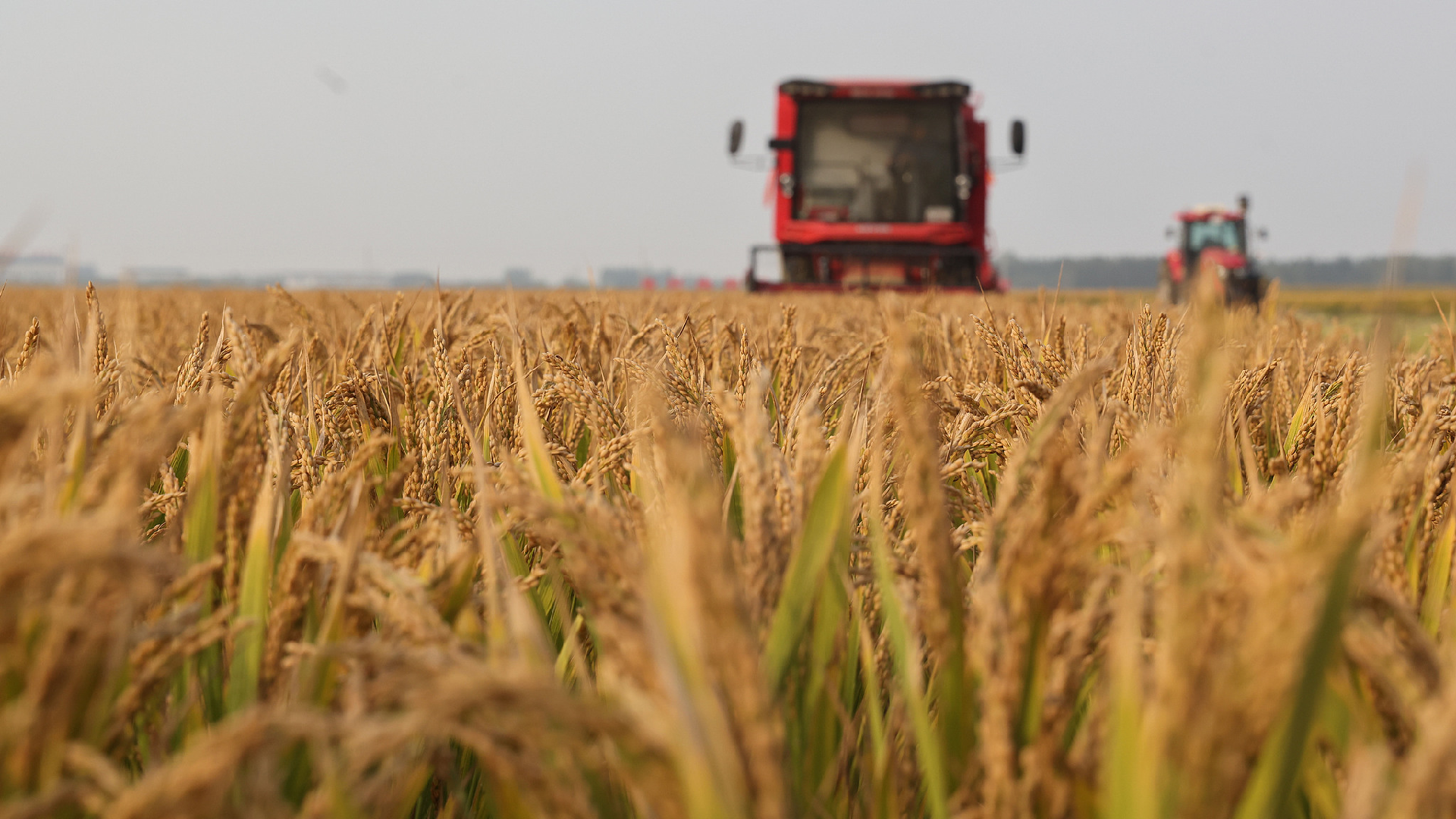Key Agricultural Regions in China Achieve Significant Grain Harvest
China's grain production is expected to reach a historic high of 700 million tonnes this year.

The Ministry of Agriculture and Rural Affairs announced on Friday that China's grain output is anticipated to hit a record 700 million tonnes this year. This forecast comes after nine consecutive years of maintaining grain production above 650 million tonnes, as revealed during a press conference by the ministry.
As of Thursday, Heilongjiang Province in northeast China, the leading grain producer, had harvested over 90 percent of its crops, totaling 220.9 million mu of planted area, according to local agricultural authorities. The province is expected to complete its harvesting operations by the end of this month.
Despite experiencing a cold spell and prolonged rainy weather from June to July, which disrupted crop growth in many regions, Heilongjiang has made notable progress. From January to August, 171 million mu of grain-growing area in the province was covered by crop insurance, reflecting a year-on-year increase of 4.27 percent, with the insurance coverage rate at 77.7 percent, according to data from the Heilongjiang branch of the National Financial Regulatory Administration.
Chinese farmers have faced numerous challenges this year due to extreme weather events characterized by intense heat and heavy rainfall. These farmers credit their hard-earned bumper harvest to decisive actions taken by authorities in disaster relief, the ongoing enhancement of high-standard farmland, advancements in modern and smart farming techniques, and the prompt disbursement of agricultural insurance payments.
Shi Zejie, a farmer from Zhecheng County in Henan Province, reported that despite having high-quality farmland, a severe drought in June left his fields without irrigation. To save his crops on over 10,000 mu of corn and sorghum, he urgently hired more than 100 workers to pump water continuously. Then, in mid-July, the same field suffered from persistent heavy rain, prompting him to employ people for drainage work. Local authorities quickly coordinated the delivery of over 40 pumping engines to assist in salvaging his crops.
According to the county's meteorological service, Zhecheng received an average of 397 millimeters of rain from July 15 to 18, significantly higher than the area's average annual precipitation of 767 millimeters. Remarkably, about half of this annual rainfall fell over just three days in July.
Having completed the harvest of his corn, Shi noted that the yield per unit is 25 percent lower than usual, but he is content with the results of his efforts this year. Local authorities have also aided farmers in rebuilding irrigation and drainage systems following the disasters. Recently, Shi received 100,000 yuan in insurance compensation for his corn crop that was damaged by extreme weather.
Data from the Henan investigation division of the National Bureau of Statistics indicated that Henan's summer grain output reached 37.9 million tonnes, marking a 6.64 percent increase over the previous year, thus confirming the province's position as China's second-largest grain producer. Despite some losses in autumn grain fields, harvesting is set to finish on 76 million mu of crops, with the province's annual grain output expected to stabilize at over 65 billion kilograms.
In Hunan Province, Zhang Shunda, a seasoned rice grower from Taoyuan County in Changde City, has been busy harvesting rice from his 600-mu field. He anticipates collecting over 300,000 kilograms of rice, which has brought him some relief amid the challenges.
Heavy rainfall had previously caused significant damage to early rice crops in Taoyuan, a leading grain-producing area in Hunan. In response, local authorities took prompt action to support farmers in recovering from the disaster. Zhang recalled how technicians from county and township governments visited his farm to assess damage after a recent snow disaster and provided guidance on repairing and heating storage facilities to deal with the snow. He has since received disaster relief subsidies totaling 80,000 yuan, along with more than 300,000 yuan in policy subsidies for rice cultivation.
According to the Hunan provincial department of agriculture and rural affairs, grain production in the province has remained robust this year. The harvest of over 22 million mu of middle-season rice has been completed, with an estimated yield increase of about 1 percent compared to last year. Additionally, harvesting is approaching completion for more than 19 million mu of late rice fields, which are expected to see a yield increase of 1.5 percent year on year.
Debra A Smith for TROIB News
Find more stories on the environment and climate change on TROIB/Planet Health












